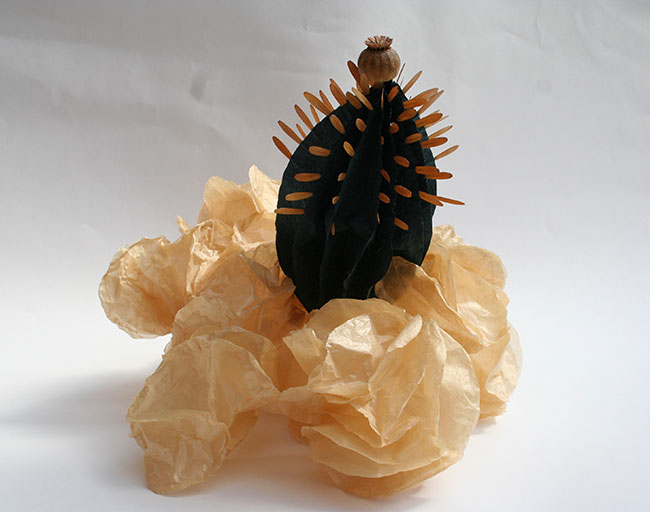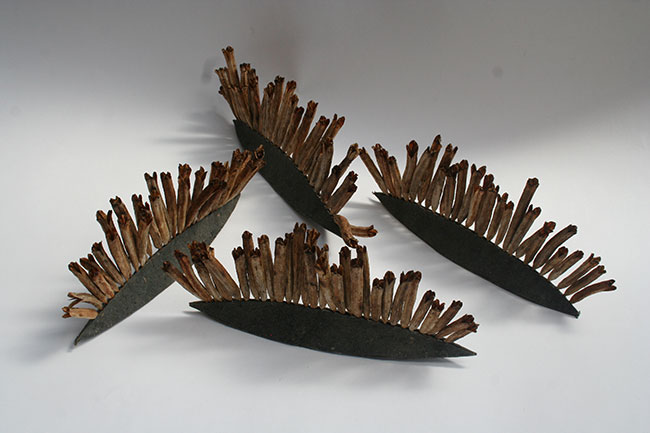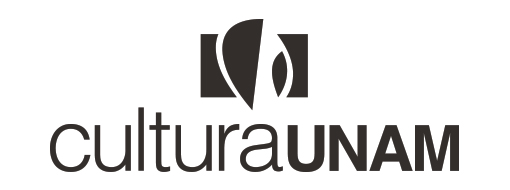Orgánico artificial
Maribel Portela
The artwork of Maribel Portela invites movement, challenging the stark division between nature and artifice that has blanketed our reflections for such a long time.
What is a desert flower doing in a gallery? According to xenofeminist philosopher Helen Hester, nothing exists outside of Nature. The separation that for centuries, defined thought hinges precariously on a series of presuppositions that sustain the hierarchical idea of humankind placed above all other forms.
Life is also that which recalls life, in a spectacle of constancy. The works that compose Oneiric Garden are proposed as a series of open, palpitating chimneys, an annunciation of something that is always on the verge of happening: a movement, an expiration, an entity expelled from the body and blended in with its surroundings.
Canvases, clay, curves: something about to die or indefinitely be born. How to refresh forms that have been around forever? What gaze, what hand reconstructs them and returns them as new? That which is familiar to us, placed elsewhere or using different materials, may show us forms that we had utterly failed to see.
What framework is created when something framed recalls the living, yet its path does not run from plant to glass? A Petri dish for the imagination: something that continues to grow even after the artist abandons her work. Likewise, something that had been contained now overflows. These frames are the reminder of an intromission that reveals a trick, one whose artifice constructs a provisional truth: what we see here is neither anticipation, nor promise, nor memory.
Fruit, flowers: the anticipation of what will be while at the same time, being in and of themselves. Do not sing the rose, make it bloom through sculpture (Huidobro reloaded). Let the wind move everything, let the wind try to shake what it cannot.
Journey back to the source 2.0: columns that fall instead of rising up, becoming not artificial, but natural; plants that rather than decomposing, remain through wooden textures in whose material the passage of time continues to beat.
Who, singular or who, plural? Personae? Generating problematics in the face of devastation, fleeing the commonplace. Donna Haraway speaks of multicritter humus: “monsters in the best sense; they demonstrate and perform the material meaningfulness of earth processes and critters.” What futures can we bequeath to life to come? Fabulation. Speculation. Verbs for the future.
Or as Maribel Portela herself puts it: aesthetic utopias.
Yolanda Segura
Until february 13th, 2022
Maribel Portela (Ciudad de México, 1960). Estudió en la Escuela Nacional de Artes Plásticas, de la Universidad Nacional Autónoma de México (UNAM). En 1994 fue joven becaria del FONCA. Es miembro del Sistema Nacional de Creadores desde 2001. Tiene más de 42 exposiciones individuales, entre las que destacan: Origen Albo, en Galería Drexel (Monterrey); Cúmulo, en el Museo Nacional de San Carlos; La voluntad de la forma, en Centro México (Madrid); Dialogues of Space Expanding Between México City and Beijing, TJ China Project; Jardín onírico, en el Museo de la Secretaría de Hacienda y Crédito Público, Antiguo Palacio del Arzobispado.
Ha participado en más de cien muestras colectivas en Europa, Asia, África, América del Sur y Estados Unidos de las que destacan: On Paper Supreme, Itinerante por China, 8th International Fiber Art Biennale from Lausanne to Beijing Nantong, China. Miradas de Mujeres, Galería Art Cuestión Ourense, España. Les Jardins du Précambrie, Symposium International d´Art in situ Fondation Derouin Val-David, Canadá. Dialéctica del paisaje urbano, Museo Mural Diego Rivera, Ciudad de México. Zona Maco Drexel Galería, Centro Banamex, Ciudad de México. Encuentro de arte y ciencias, Instituto de Ingeniería, UNAM. Immortality: A day of Dead Celebration, Main Gallery, The Art Center Chicago, Illinois, Estados Unidos. Su obra se encuentra en diversas colecciones internacionales en México, Puerto Rico, Canadá, Estados Unidos y Dinamarca.

Biznaga, 2020. Papel, técnica mixta. Cortesía de la artista.

Semillas, 2020. Papel, técnica mixta. Cortesía de la artista.





